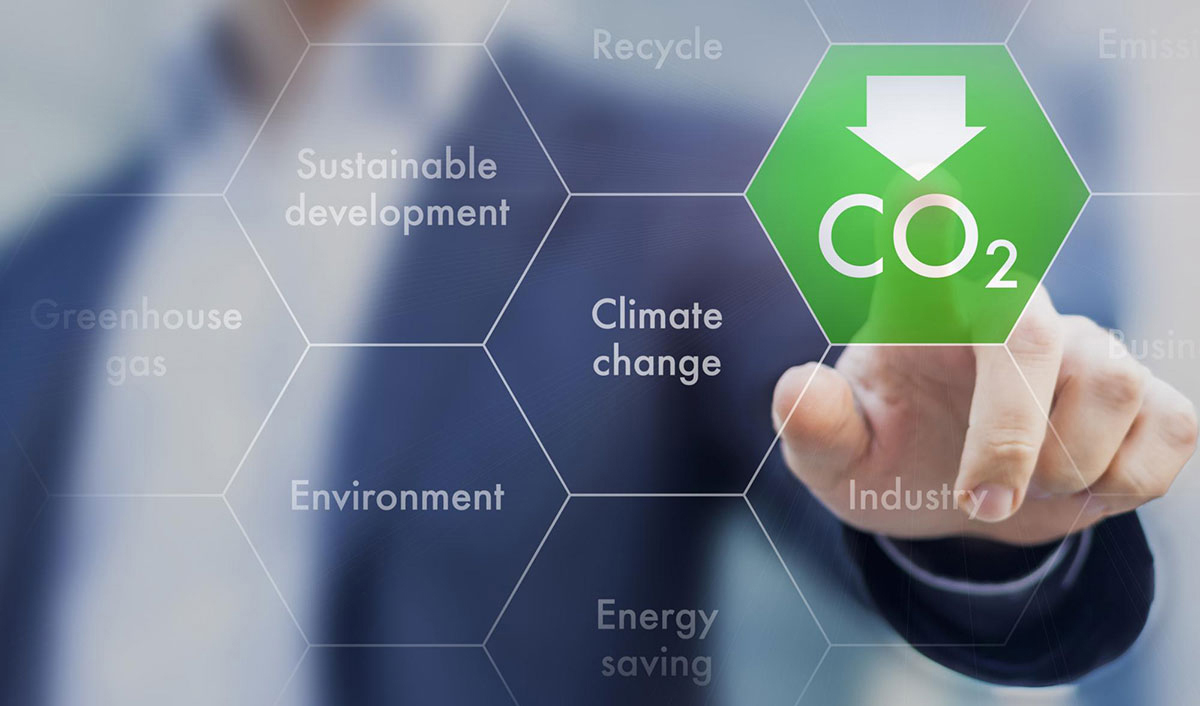
Researchers have found a way to convert carbon dioxide into liquid fuels and value-added chemicals using plasma, which allows the process to be both lower temperature and lower pressure compared to traditional methods.
Credit: Adobe Stock
A new, environmentally friendly, single-step process has been developed to convert carbon dioxide into higher hydrocarbons using plasma, according to scientists and engineers.
Converting carbon dioxide into usable liquid fuels and value-added chemicals like plastics offers not only a possible solution to reduce carbon dioxide emissions, but also the potential to alleviate dependence on fossil fuels. However, carbon dioxide conversion through catalysis—an acceleration of a chemical reaction—normally requires multiple steps and high temperature (roughly 400–750 degrees Fahrenheit) and high pressure (150 to 600 pounds per square inch), conditions that require a great deal of energy to create. Finding a better way to convert waste carbon dioxide under mild conditions remains a major challenge in catalysis.
Researchers from Penn State, the Chinese University of Hong Kong, and Sichuan University may have found a solution. The team has developed a one-step, plasma-enabled catalytic process to convert carbon dioxide into higher hydrocarbons. Unlike traditional processes, this method of hydrogenation is operated at low temperature (75 degrees Fahrenheit) and pressure (15 pounds per square inch) using a dielectric barrier discharge packed-bed plasma reactor.
The key component to make this new process work is the addition of non-thermal plasma, which provides a distinctive medium for performing catalytic conversion at low temperatures due to its non-equilibrium characteristics, the scientists said.
“There are a lot of high energy electrons within the plasma phase,” said Xiaoxing Wang, associate research professor at the Penn State EMS Energy Institute. “These electrons can activate both carbon dioxide and hydrogen molecules in the gas phase through excitation and dissociation without the need of surface adsorption and activation as required for traditional thermal catalysis, so the reaction can be operated at low temperature.”
 A 3D rendering of a ball of energy and plasma in the core of a reactor. Credit: Adobe Stock
A 3D rendering of a ball of energy and plasma in the core of a reactor. Credit: Adobe Stock
Plasma itself can enable carbon dioxide hydrogenation into carbon monoxide at room temperature. Though various catalysts have previously been studied for plasma-catalytic carbon dioxide hydrogenation, these experiments have only yielded carbon monoxide and methane, with only one report showing a higher hydrocarbons selectivity of roughly 14 percent. This new study is the first time this process has yielded a higher hydrocarbons selectivity of 46 percent at a carbon dioxide conversion rate of 74 percent.
This work, recently published in Green Chemistry, shows the substantial impact of the catalyst-bed configuration on plasma-catalytic carbon dioxide hydrogenation to higher hydrocarbons in one step at low temperature and atmospheric pressure, the scientists said.
Currently, the researchers are using a conventional aluminum oxide supported Fisher-Tropsch catalyst for the process. They believe the method could be improved further and are developing an even more effective catalyst, through exploration into how plasma contributes to the carbon dioxide conversion and hydrocarbon formation in the plasma-enabled two-catalyst-bed process.
“Carbon dioxide conversion is facing the challenge of climate change,” Wang said. “We need to do something to reduce carbon dioxide emissions. If we can convert carbon dioxide back into fuels, we close the carbon loop and make the whole process much more sustainable and greener. This work provides a new strategy in developing new processes for carbon dioxide hydrogenation at low temperature and pressure.”
Penn State researchers involved in this study were Sven G. Bilén, professor of engineering design, electrical engineering, and aerospace engineering; Sean D. Knecht, assistant teaching professor of engineering design; Jiajie Wang, visiting graduate student; and Mohammad S. AlQahtani, graduate student.
Other researchers included Chunshan Song, distinguished professor emeritus at Penn State and dean of faculty of science at the Chinese University of Hong Kong; Wei Lun, professor of chemistry at the Chinese University of Hong Kong; and Wei Chu, professor of chemical engineering, Sichuan University.
A Penn State EMS Energy Institute seed grant provided funding for this research.

